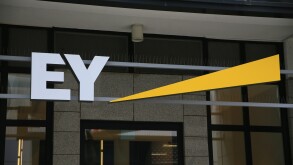This is the first article of a three-part series in which we will analyse the Brazilian approach towards royalties in three different aspects. Part 1 will discuss their inclusion, or not, in the customs valuation basis for importation. Part 2 will examine the limitation in remittances abroad and practical complications from an arm’s-length perspective for the other contracting party. Finally, part 3 will cover the inclusion of technical and administrative service fees in Art. 12 (Royalties) of the Brazilian income tax treaties and how taxpayers are dealing with this issue.
The topic is controversial. Brazil imposes a limitation on the remittances of royalties abroad at generally 5% (for some specific activities it can be lower).
As a consequence, Art. 18 of Law 9,430/1996 stipulates that royalty fees paid abroad are not subject to the transfer pricing legislation.
However, the law is silent about the treatment of royalty fees for customs valuation purposes – and it could have direct impact for Brazilian importers, mainly because the customs value is the main item to be compared for two different methods, the PIC (equivalent to the comparable uncontrolled price method) and the PRL (equivalent to the resale price method but with fixed margins ranging from 20% to 40%, depending on the sector).
The situation has been reviewed in the last 10 years and, and in the first assessments, the tax authorities wanted to include the amount paid to foreign entities as rights for artistic works in the customs valuation, such as the royalties paid for CDs and DVDs, in which only the customs value of the media was taxable.
The final outcome in the administrative sphere was favourable to taxpayers, as the beneficiary of the rights (which was not included in the concept of royalties for the purposes of the GATT) was different to the seller of the media (Decision 3101-00.273, October 20, 2009). Other decisions were issued in the same line.
Another approach was taken in the importation of materials to build a plant under an EPC contract. The tax authorities aimed to include the technical fees and know-how payments in the customs valuation but, again, they did not succeed (Decision 303-35.466, July 7, 2008).
The most significant discussions relate to imported goods with payment of royalties in a separate contract.
In a case decided in 2011, and even though the royalties were due for a license contract for the technology to produce goods in the country, the tax authorities decided that it should be included in the import price, based on Art. 8.1.c of the GATT (Decision 3803-01.349, March 2, 2011).
More recently, two similar cases have had a different outcome, based on the fact that the term “sale condition” (included in Art. 8.1.c of the GATT) refers to a condition that may be imposed by the seller (direct or indirectly) when it may also be the beneficiary of such royalties. (Decisions 3402-002.417, July 23, 2014 and 3402-02.444, August 19, 2014).
As a separate contract, it is not subject to transfer pricing, it has a remittance limitation, while if included in the import value it would also increase the effective price for comparability in the PIC and the PRL.
As can be seen, although a separate and isolated administrative decision has included royalties in the customs valuation basis, the general position of the administrative authorities is in a different sense.
Such inclusion could result in terrible transfer pricing adjustments, especially for taxpayers using the PIC or PRL methods for import prices but, in our opinion, the tax authorities would not have legal arguments to sustain such inclusion in court.
By André Gomes de Oliveira (andre.oliveira@cbsg.com.br) and Francisco Lisboa Moreira (francisco.moreira@cbsg.com.br)









